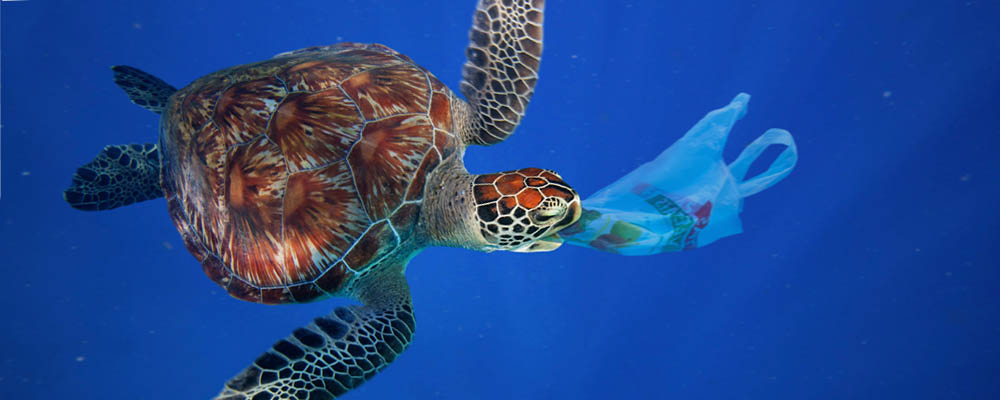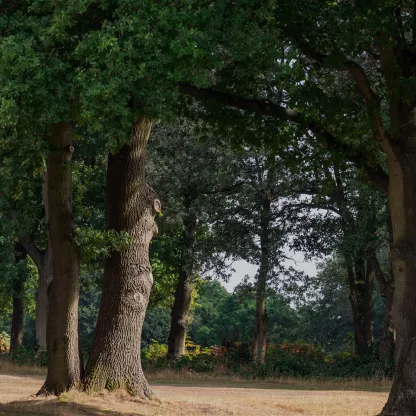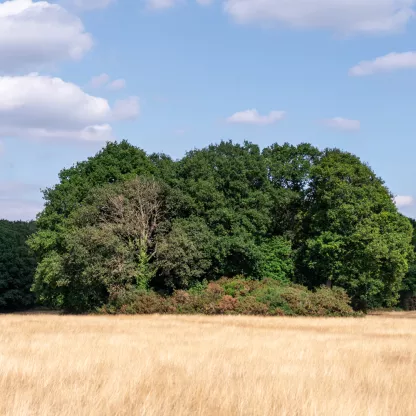The environmental damage that plastic waste causes has become a global problem. Steps to address the issue are now being taken worldwide, with a reduction in non-biodegradable plastics a key goal. But how close is science to offering us viable solutions?

Saving the planet from plastic
Article last updated 19 February 2023.
Victoria Hoskins, Investment Director, Rathbone Greenbank
The term “throwaway society” first appeared in an article in Life magazine in 1955. The piece was accompanied by a photo of a stereotypically clean-cut American family cheerily hurling an array of household objects into the air, as if casting off their unwanted cares.
It is extraordinary to think now that the general message, as encapsulated in that image, was that the freedom to discard once-used items signalled some kind of wonderful new age. Cleaning up was just another relic of the drudgery of yesteryear. The future lay in lobbing everything into the bin.
Today “throwaway society” has taken on a much darker meaning. Our disposable culture has created a pollution problem that reaches all around the globe, blighting everywhere from the streets of our cities to the depths of our oceans. And the material that has perhaps come to define the issue more than any other is plastic.
The first synthetic plastic, Bakelite, was invented in 1907. What made it revolutionary was that it was derived from fossil fuels — specifically, coal tar — rather than from a natural source such as an animal or a plant. It was so easy to mould that the casing for the famous Bakelite phone was said to have been produced in as little as seven minutes; it was also smooth to the touch and easy to keep clean.
Synthetic plastic has since become a part of our everyday lives. Yet the very same qualities that once saw its ubiquity celebrated — cheapness and durability — are now central to its role in environmental destruction. The fact that plastic is inexpensive to produce means the world is full of it; and the fact that it is not biodegradable means we are struggling to get rid of it.

Perhaps even more problematic is the way plastic is now seeping into the environment from our homes and factories. Biodegradable plastics that are still oil-based but contain additives to make them break down need to be disposed of in a controlled way — otherwise they break down into micro plastics, which are even more damaging. As international research and the media continue to highlight new evidence of the harm being done, the world is waking up to the scale of the problem.
Our changing attitude towards plastic bags offers an obvious example. In 2014, according to the UK government, British supermarkets supplied their customers with more than 7.6 billion single-use plastic bags — equivalent to around 140 bags per shopper. Since October 2015, when new legislation came into force, any retailer with more than 250 employees has been required to charge 5p per bag and so encourage the concept of the “bag for life” -— resulting in usage in England falling by more than 80%.
“We are beginning to act,” says Gary Leeke, a professor of chemical engineering at Cranfield University and an expert on plastic and the science of recycling. “Bans on plastic carrier bags are even coming into force in countries such as Kenya, with fines of up to $38,000 or four years in jail for non-compliance. We are seeing the banning of microbeads in products. Coca-Cola is set to double the amount of recycled plastic in its bottles. Higher landfill taxes are being discussed in the UK to encourage recycling.”
Such initiatives are undoubtedly encouraging, but Professor Leeke is quick to caution that much more remains to be done. “We need to be proactive as consumers and lobby for plastics and packaging that have minimal environmental impact,” he says. This is a challenge that teams at numerous British universities are now tackling, as the following examples illustrate.
Biodegradable plastic
Using the starch of plants such as maize or sugar, scientists can now make biodegradable polymers or plastics that are capable of decomposing naturally.
Another unusual source of material for biodegradable plastic is the shrimp shell. Researchers at the University of Nottingham and the Nile University in Egypt are developing a way of producing shopping bags from dried shells bought cheaply from restaurants, supermarkets and local fishermen. The shells are cleaned, chemically treated, ground and dissolved into a solution that dries into thin films of plastic — a technique researchers say could be used for large-scale industrial production.
“Non-biodegradable plastic packaging is causing environmental and public health problems in Egypt,” says Dr Nicola Everitt, a bioengineer at the University of Nottingham. “This includes contamination of water supplies, which particularly affects the living conditions of the poor. Using a degradable biopolymer made of shells for carrier bags would lead to lower carbon emissions and reduce food and packaging waste.”

Edible plastic
Skipping Rocks Lab is a start-up company on a mission “to make packaging disappear”. Working in conjunction with Imperial College London, it has developed Ooho, a fully degradable spherical package made from seaweed extract.
Ooho is an example of edible plastic. This means the spheres can be filled with water or other drinks and safely consumed. The idea is that you place the package in your mouth, pop the jelly-like membrane and release the liquid inside — and swallow the lot whole if you wish.
Ooho should decompose within four to six weeks if not consumed. “Most people just grab a bottle of water, hold it for five minutes, drink it and throw it away,” says Lise Honsinger, Skipping Rocks Lab’s chief operating officer. “That bottle can then exist for 700 years. This is a solution to that.”
Sugar plastic
Scientists at the University of Bath’s Centre for Sustainable Chemical Technologies have found that some biodegradable plastics can be made using sugar and carbon dioxide. Such a process could help replace non-biodegradable plastics made from crude oil.
Using low pressures and room temperatures, researchers have made “alternative” polycarbonate — or bioplastic — that could be used for food containers. After use, as the enzymes in soil cause it to decompose, the material reverts back to carbon dioxide and sugar.
“Chemists have a hundred years’ experience of using petrochemicals as a raw material,” says research team member Dr Antoine Buchard. “We need to start again, using renewable feedstocks like sugars as a base for synthetic but sustainable materials. It’s early days, but the future looks promising.”
Corn plastic clothing
Polyester fabric was invented in the 1940s and quickly became popular for its wrinkle-free appearance. Only recently have its less desirable properties become apparent.
Microscopic polyester fibres can reach the oceans via the waste water from our washing machines. They have been discovered in some of the world’s deepest-living sea creatures. Research by the Scottish Association for Marine Science has identified polyester as the most abundant plastic in the oceans.
During the past decade, in a bid to address this issue, researchers have been developing a natural alternative to polyester, polylactic acid. Derived from corn starch, it can be used to make clothes with the same low-maintenance properties. Crucially, unlike polyester, it is biodegradable.
Cars on the compost
The automotive industry not only faces pressure to produce vehicles that limit environmental damage while on the road. It also faces pressure to produce vehicles that limit environmental damage when they are no longer clocking up the miles.

European Union figures highlight the scale of the “car composting” problem. The total number of “end-of-life” vehicles reported in the EU in 2007 was 6.3 million; by 2014 the figure had increased to nine million — potentially equivalent to a six-million-tonne scrapheap.
Scientists at the University of Warwick have been exploring ways of using a bamboo-like plant called miscanthus — also known as elephant grass — in car production. Short lengths of the hardy perennial have been incorporated as a biodegradable structural filler in plastic car parts such as wheel trims. In addition, car manufacturer Mazda has come up with the industry’s first high-strength, heat-resistant and plant-based bioplastic for interior parts.
Plastic-hungry enzymes
The plastic commonly used in bottles is polyethylene terephthalate — usually known simply as PET. It is so strong that it takes hundreds of years to degrade.
A potentially game-changing solution to this problem has recently emerged in the form of PETase, a naturally occurring enzyme produced by a bacterium that effectively “eats” PET. It was originally discovered in sediments at a recycling plant in Sakai, Japan, and is now the subject of an international research effort.
Scientists at the University of Portsmouth are leading attempts to modify, optimise and engineer PETase with a view to using it to break down discarded plastic bottles in a matter of days. Such a process, if it could be successfully scaled, could revolutionise the recycling of PET products.
Beyond science
Despite these and other breakthroughs, we are still some way from inventing biodegradable alternatives for all of our plastics. In light of this, says Professor Leeke, we have to recognise the need to recycle more.
“Plastics are a benefit to society, and their growth is inevitable,” he says. “Recycling rates for certain plastics are set to increase, but we should be implementing a more intelligent waste strategy to recover, reuse and recycle these materials.”
Last year the Guardian reported that a million plastic bottles are bought around the world every minute and that this will increase by another 20% by 2021. This level of demand — equivalent to the purchase of around 20,000 bottles a second — is thought to be driven by the ever-growing market for bottled water and by emerging economies’ move towards a more urbanised, “on the go” culture.
Some 38.5 million bottles are used in the UK every day, with just over half recycled and the remainder ending up in landfill, burnt or leaking into the environment. In the developing world, where recycling is even more scarce, one innovative solution that has emerged recently is to use plastic bottles to build houses.
Susanna Heise, an environmental activist, came up with the idea while living in Guatemala. Using a stick to pack plastic bags and other non-biodegradable waste into a two-litre plastic bottle provides the core of an EcoBrick — a highly insulating, robust and affordable material that can be stuck together with cement or clay. Hug It Forward, an organisation that grew out of the concept, now helps communities build “bottle schools”.
We can also find ways to reduce the use of plastics in our daily lives. The past is a good place to seek inspiration. Paper bags, glass bottles and cardboard packaging served previous generations well enough. We can buy clothes made of natural fibres, like wool, silk and cotton. We can replace disposable coffee cups with metal flasks or even bamboo cups. In considering solutions, however, we need to source and produce responsibly to avoid unintended consequences. It is not about looking for quick answers that simply replace one problem with another.
Policymakers, too, are aware that they have a huge part to play. Encouraged by the success of the “bag for life” initiative, the UK government is considering further schemes to promote more sustainable living. In February this year Environment Secretary Michael Gove suggested that plastic straws, around 8.5 billion of which are used in Britain every year, could be banned.
The contrast between the desperate need for action and the misguided optimism of that Life article would be amusing if it were not so tragic.
As Sir David Attenborough remarked at the end of his recent BBC series, Blue Planet II: “We are at a unique stage in our history. Never before have we had such an awareness of what we are doing to the planet, and never before have we had the power to do something about that. The future of humanity and, indeed, all life on Earth now depends on us.”







